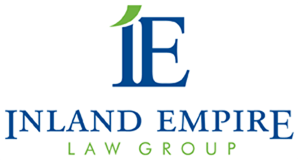The duty of a store owner is to maintain the property in a safe condition which is a fundamental and basic duty imposed upon these companies for the protection of their patrons. You have to ask yourself, why wouldn’t every shop owner make every effort to provide a safe environment for their customers? Most do want to protect their visitors, but to do so, it requires money, vigilance and anticipating possible hazards. It also requires training of employees to observe and anticipate dangerous conditions.
Commercial Safety Violation Causes Death of Boy
Consider the tragic accident of a young 2-year-old boy from Utah who lost his life when a statue of a dolphin fell on him at Fisherman’s Wharf in San Francisco. According to reports, the 6-foot tall statue toppled onto the toddler when the child reached up and grabbed the statue with his arms and legs. The statue was made of heavy metal but the weight of the child caused it to go off balance and fall. The initial thought was that the child had a nose bleed, but he ultimately died from internal injuries within several hours following the incident. It was also reported that the placement of the statue was in violation of a city ordinance related to the placement of merchandise on a sidewalk. Despite this violation, the incident was due to the fact that the object was sufficiently unstable against the weight of a mere two-year-old child.
This tragic accident is an example of the failure of a shop owner to think through the possible scenarios which could result in an unsafe environment at that store. The fact a child might climb on some object, especially a large animal-shaped object, is within the realm of logical possibilities. Other examples of not thinking through possible safety issues, might include stacking heavy objects above the typical reach of a customer. It is foreseeable that a customer would reach for an overhead object, but in doing so, lose a handle on the object and have it fall down on the patron.
Other Types of Dangers Store Owner's Should Be Aware Of
There are other types of dangers a store owner must guard against which may, or may not be caused by the store’s owner or employees. These situations including dangers caused by other patrons of the store. For example, I handled a case where another customer dropped a can of white beans in water. When the can fell, it cracked, allowing the water to leak from the can and onto the smooth tile floor. The water pooled on the floor for over thirty minutes without a single employee inspecting the area for slip and fall hazards. Along came our client down this aisle, looking at the shelf for the items she came to purchase. Not noticing the wet conditions on the floor, she slipped and immediately fell to the floor striking her knee and causing her injuries.
While this example shows the negligence of a patron in putting a leaking can back on the shelf, it also exposes the failure, or negligence, of the store operator to perform proper routine inspections for the safety of those using the store aisles. The failure to make routine and proper inspections increase the risk of slip and fall or trip and fall injuries to those who are unaware of the existence of such hazards. Implementing an inspection and cleaning program costs money, protocols, training, as well as supervision of the proper applications of such procedures. The simple failure of one employee to do his or her job can lead to serious, life-altering injuries to the unsuspecting store visitors.
Commercial Property Hazards
There are so many ways a hazard condition on a property can arise and so many possible injuries, from a minimal strain to death. Making safety a top priority within and outside of the store’s building is just as important in the operation of a business, as is making a profit. The elimination of injury causing conditions also reduces the expenses associated with the payment injury claims.
When these facilities fail to comply with the basic standard of care in keeping their properties safe for the reasonable use of their customers, that failure is negligence. Proving negligence of the store owner is the starting point to a successful personal injury lawsuit against a store for a premises liability claim. Since not every injury on the property of another is the result of negligence, engaging a lawyer early after an injury can help distinguish a claim between an inappropriate claim, or one where no recovery is possible, and a successful outcome for which recovery highly probable.
Contact the Top Rancho Cucamonga Personal Injury Attorneys
The Inland Empire Law Group understands the difference between a successful and failing claim. If you have suffered an injury or a loved one has died due to the possible negligence of another, call the Inland Empire Law Group for a careful evaluation of your claim. The evaluation is without charge to you. Call now and learn whether your case has the probability of a successful outcome and how the Inland Empire Law Group can help you, 909-481-0100.

